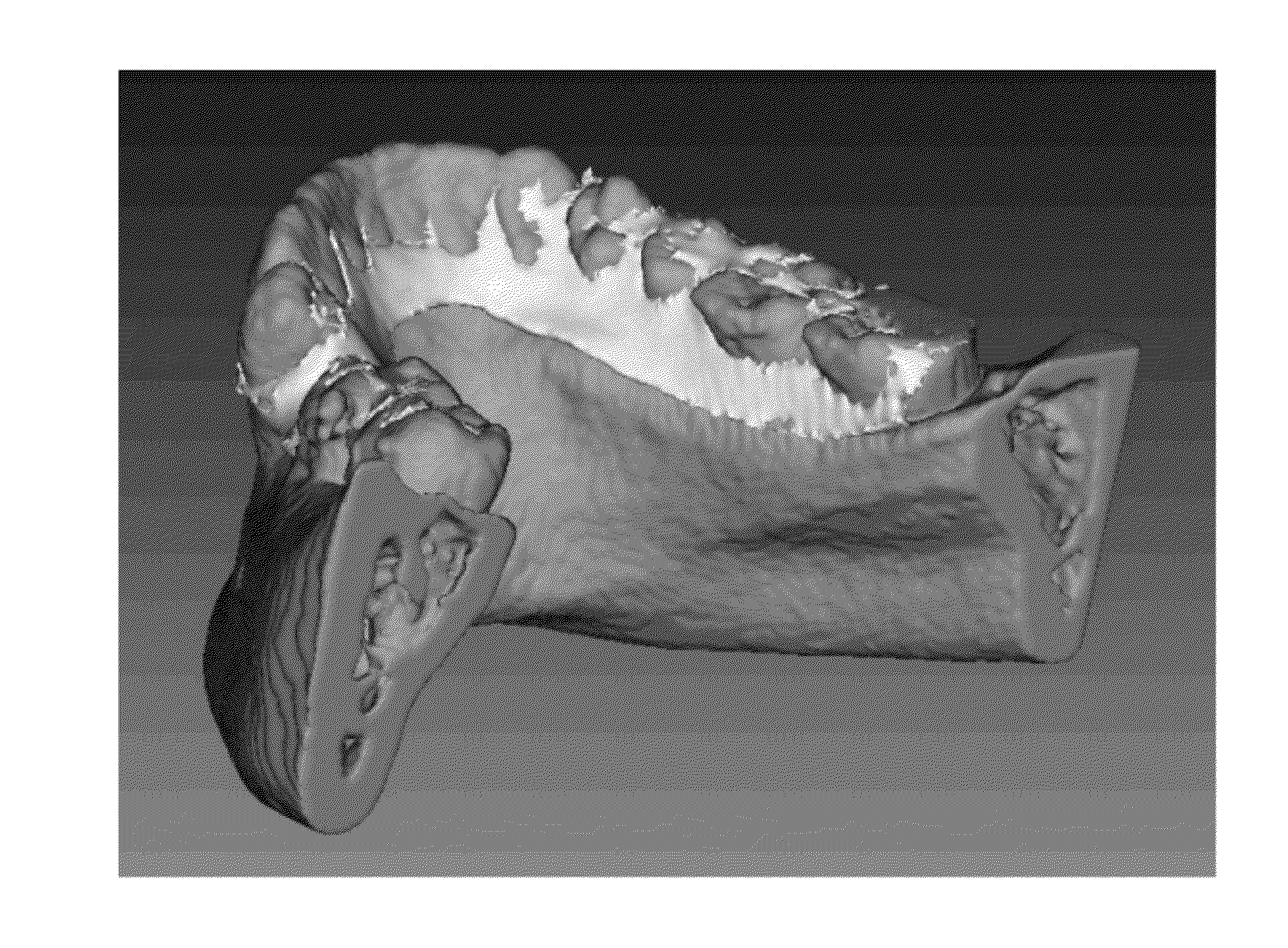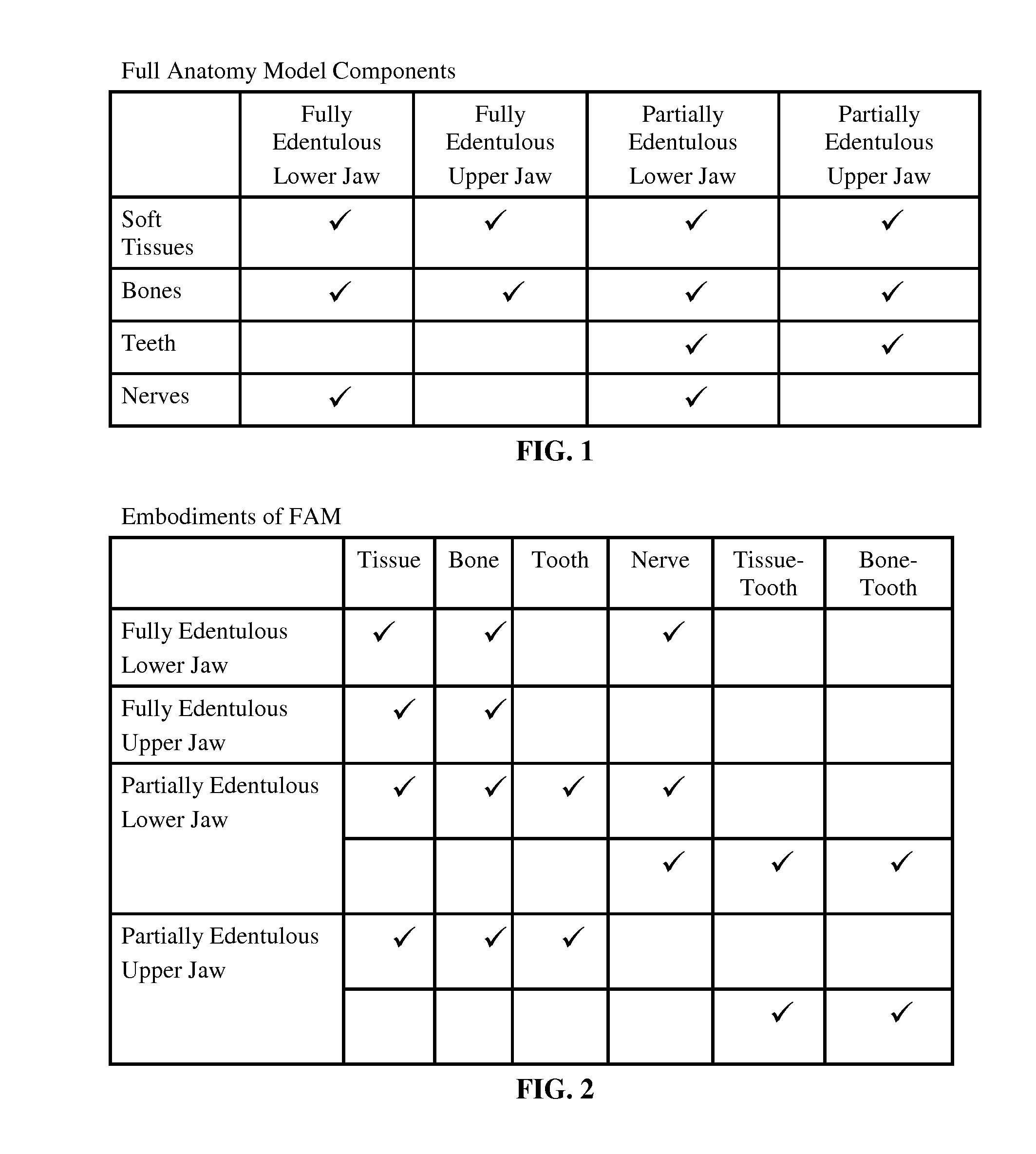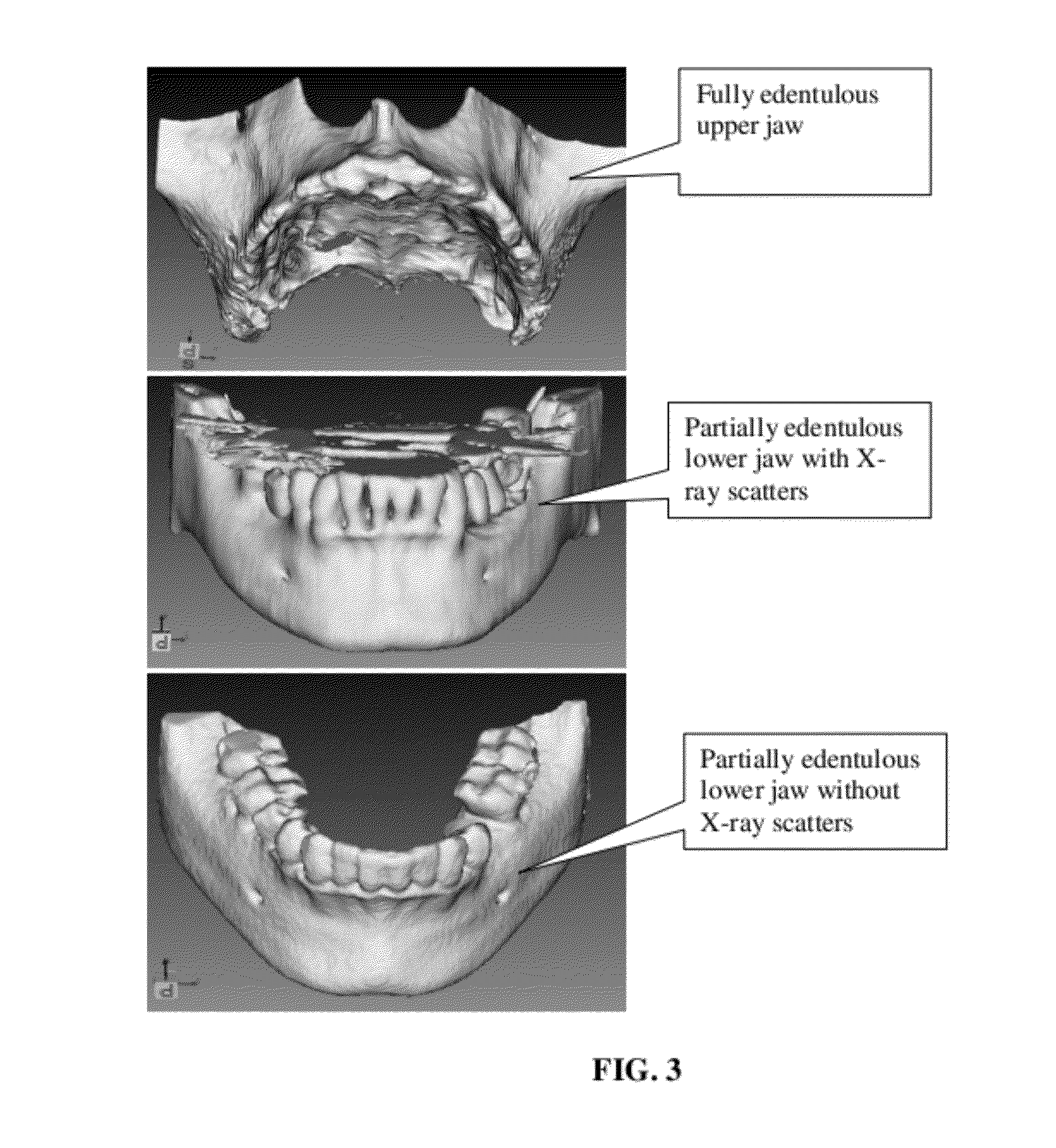Method and system of anatomy modeling for dental implant treatment planning
a dental implant and anatomy modeling technology, applied in dental surgery, instruments, analogue processes for specific applications, etc., can solve problems such as the inability to preview restorations with the actual patient anatomy, the inability to use bone and teeth combinations as aesthetic references, and the inability to use virtual teeth functionally to meet the actual needs of aesthetic evaluation
- Summary
- Abstract
- Description
- Claims
- Application Information
AI Technical Summary
Benefits of technology
Problems solved by technology
Method used
Image
Examples
Embodiment Construction
Full Anatomy Model
[0038]FAM is defined as a collection of geometric models representing a patient's anatomical structures including jaw bones, teeth, soft tissues and nerves. FIG. 1 shows the components of a FAM. The component for soft tissues is the main differentiator. The checkmarks indicate all the applicable components for various cases. For example, the FAM of a “Fully Edentulous Lower Jaw” case will include the soft tissues, the bones and the nerves. With a fully edentulous case, there is no remaining tooth, so the components will be simply for the bones, soft tissues and nerves. For an upper jaw, there is no nerve model.
[0039]The components of a FAM are not necessarily separated geometric models. The actual embodiments can combine anatomical structures in one model or more. Specifically, it is very common that the soft tissues and teeth are combined into one model, namely, “tissue-tooth” model; the bone and teeth are combined as “bone-tooth” model. In FIG. 2, the basic embod...
PUM
 Login to View More
Login to View More Abstract
Description
Claims
Application Information
 Login to View More
Login to View More - R&D
- Intellectual Property
- Life Sciences
- Materials
- Tech Scout
- Unparalleled Data Quality
- Higher Quality Content
- 60% Fewer Hallucinations
Browse by: Latest US Patents, China's latest patents, Technical Efficacy Thesaurus, Application Domain, Technology Topic, Popular Technical Reports.
© 2025 PatSnap. All rights reserved.Legal|Privacy policy|Modern Slavery Act Transparency Statement|Sitemap|About US| Contact US: help@patsnap.com



